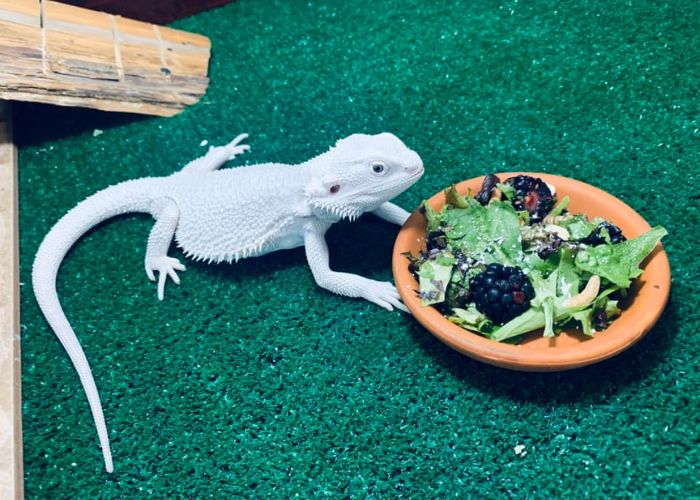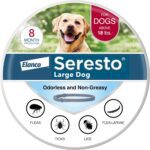Can Bearded Dragons Eat Spring Mix? The entrancing person of hairy winged serpents has added to their rising ubiquity as pets. To keep their well disposed textured companions solid and cheerful, proprietors of these animals are many times searching for new pet food choices.
A well known salad mix, spring blend incorporates a scope of verdant greens. Is it protected to take care of whiskery mythical serpents? That is a typical inquiry. Here we’ll investigate the healthful substance of spring blend and why hairy mythical serpents could profit from eating it. Lets read below about “Can Bearded Dragons Eat Spring Mix?
Understanding the Bearded Dragon’s Diet:
The beardded mythical beast is an omnivore since it consumes the two plants and bugs. At the point when they’re out in nature, they eat things like bugs, little creatures, and plants. It is fundamental to give them a fluctuated diet to keep them sound while in imprisonment. If you want them to grow and develop to their full potential, you need to provide them with a balanced diet that is high in protein, fiber, vitamins, and minerals.
Nutritional Composition of Spring Mix:
A well known salad combination called spring blend frequently incorporates various mixed greens like rocket, spinach, romaine lettuce (both green and red assortments), chard and others. In spite of the great supplement thickness of these greens, whiskery mythical serpents probably won’t have the option to process them as a result of their special wholesome sythesis.
- Arugula: a good source of calcium for bones that are strong. Vitamins like these are present: folate, A, and K.
- Spinach: Despite the fact that it is high in iron, it likewise contains oxalates, which, when ingested in enormous amounts, can tie calcium and lead to a lack of calcium.
Giving spinach in moderation is fundamental. - Romaine Lettuce: It is a fantastic method for keeping up with hydration because of its high water content. Not as pressed in supplements as another greens, however it has a few nutrients and minerals.
- Chard: There are a ton of nutrients included, including An and K. It incorporates oxalates, so use it modestly.
Potential Concerns with Spring Mix:
Unshaven winged serpent managers need be aware of a couple of elements, regardless of whether spring blend might incorporate a few useful supplements:
- Oxalates: Oxalates, for instance, can bind calcium, making it less absorbable; they are bountiful in a few spring blend greens, like spinach and chard. Unnecessary oxalate levels in hairy winged serpents can prompt metabolic bone illness.
- Moisture Content: Bearded dragons, which evolved to live in arid environments, may experience diarrhea and other gastrointestinal issues if they consume too much water from greens like romaine lettuce.
- Calcium to Phosphorus Ratio: Bearded dragons require an ideal calcium-to-phosphorus ratio. You might need to add extra spring blend to make it more adjusted assuming that is your objective.
Guidelines for Offering Spring Mix to Bearded Dragons:
- Moderation is Key: Even though some of the ingredients in spring mix can be good for health, you should only give small amounts to avoid problems.
- Rotate Greens: Consolidate low-oxalate greens like collards, mustard, and dandelion greens into your spring blend consistently to keep a balanced eating regimen.
- Supplementation: Getting your calcium and phosphorus utilization under wraps is more straightforward with the assistance of dietary enhancements. The people who eat a ton of spring blend might profit from taking calcium supplements.
- Observation: Give close consideration to your hairy mythical beast’s way of behaving, dung consistency, and by and large wellbeing. It very well might be expected to make dietary changes in the event that indications of gastrointestinal issues or healthful lacks are distinguished.
Conclusion:
A Summary of Can Bearded Dragons Eat Spring Mix
In conclusion, unshaven mythical serpents can consume spring blend, yet it ought to be given with some restraint and as a feature of a decent eating routine. The presence of oxalates in spring mix is one aspect of the nutritional profile that needs to be taken into consideration.
Be aware of what you feed your whiskery winged serpent, particularly concerning greens, and furnish them with the proper supplements on the off chance that you believe they should carry on with a long, sound life. Counsel a vet that worked in reptiles for explicit exhortation in light of your hairy mythical serpent’s wellbeing. I hope you like reading “Can Bearded Dragons Eat Spring Mix?”







